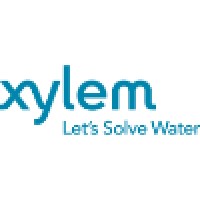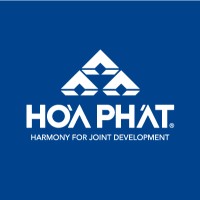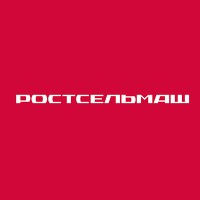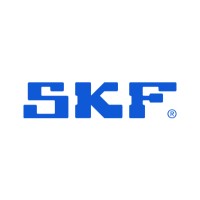Company Cyber Security Posture
NANA
NA Company Details
NA
NA
NA
NA
NA
NA
Scan still pending
NA
NA
Between 200 and 800
This score is AI-generated and less favored by cyber insurers, who prefer the TPRM score.
 NA Global Score
NA Global Score.png)

Company Scoring based on AI Models
| Model Name | Date | Description | Current Score Difference | Score |
|---|---|---|---|---|
| AVERAGE-Industry | 03-12-2025 | This score represents the average cybersecurity rating of companies already scanned within the same industry. It provides a benchmark to compare an individual company's security posture against its industry peers. | N/A | Between 200 and 800 |
Company Cyber Security News & History
| Entity | Type | Severity | Impact | Seen | Url ID | Details | View |
|---|
Company Subsidiaries

NA
Access Data Using Our API

Get company history
.png)
NA Cyber Security News
Accelerating Japan’s growth with AI
Today, Microsoft Corporation (hereafter referred to as Microsoft) announced the expansion of its cloud infrastructure to boost AI performance ...
JFE Steel and Deloitte Tohmatsu Cyber Establish Cybersecurity Company
JFE Steel Corporation, one of the world's leading integrated steel producers, was established through the consolidation of NKK Corporation and ...
India's JSW Steel to acquire thyssenkrupp Electrical Steel India via JV
"The market for grain oriented electrical steel is growing rapidly. This acquisition will enable the consortium of JSW and JFE to manufacture ...
Automotive Advanced High‑Strength Steel (AHSS) Market Set to Reach $48.13 Billion by 2034 – BIS Research
The global automotive advanced high-strength steel (AHSS) market is projected to grow from $23.79 billion in 2024 to $48.13 billion by 2034, ...
KuCoin Achieves AAA Rating on CER.live, Solidifying Position as a Top Secure Cryptocurrency Exchange
Single-Share Per Lot Makes China Tech Investing Accessible to All HONG KONG, July 9, 2025 /PRNewswire/ -- Global X ETFs, a leading global provider of ETF ( ...
News Content Hub - Japan completes first hydrogen, green-steel tugboat
It has twin 12-cylinder hydrogen dual-fuel engines each delivering 3,280 kW of power, a beam of 10 m and a draught of 4 m, and is under 300 gt.
Whitehaven’s billion-dollar Blackwater sale
Whitehaven Coal's decision to sell 30 per cent of its Blackwater coal mine underscores the long-term value and strategic importance of its ...
Stainless Steel Seamless Pipes Market worth $5.15 billion by 2030
Austenitic stainless steel is the most rapidly growing type of seamless stainless steel pipe owing to its exceptional properties, making it ...
MOL announces delivery of “environmentally friendly” vessel Prima Verde
The vessel's hull is made from JGreeX, a green steel material supplied by JFE Steel Corporation, which significantly reduces CO2 emissions by ...

NA Similar Companies

Xylem
Xylem is the global leader in advanced technologies, solutions and services that address the world’s biggest water challenges. We enable our customers to dramatically improve the way water and wastewater is used, managed, conserved, re-used and returned to nature. At every level, our global team is

Hoa Phat Group
Hoa Phat is a leading industrial manufacturing conglomerate in Vietnam. Founded in August 1992 as a company specializing in trading construction machinery, Hoa Phat steadily expanded into new sectors. Today, the Group operates across five key industries: Iron and steel - Steel products - Agriculture

Johnson Controls
At Johnson Controls, we transform the environments where people live, work, learn and play. As the global leader in smart, healthy and sustainable buildings, our mission is to reimagine the performance of buildings to serve people, places and the planet. Building on a proud history of 140 years o

Rostselmash
Ростсельмаш — российская компания, входящая в пятерку крупнейших мировых производителей сельскохозяйственной техники. В составе 13 предприятий. Производственные площадки в странах: Канада, Россия, США, Украина и Казахстан. В группу компаний Ростсельмаш входят 13 предприятий, выпускающих технику под

Mitsubishi Heavy Industries
Mitsubishi Heavy Industries (MHI) Group is one of the world’s leading industrial firms. For more than 130 years, we have channeled big thinking into solutions that move the world forward – advancing the lives of everyone who shares our planet. We deliver innovative and integrated solutions across a

SKF Group
What started with the invention of the self-aligning bearing in 1907 has now evolved into something much more! Our products enable rotation. Machinery, cars, airplane engines, even household products - anywhere there are parts that rotate, our solutions can be found! As the world moves swiftly int

Frequently Asked Questions
Explore insights on cybersecurity incidents, risk posture, and Rankiteo's assessments.
NA CyberSecurity History Information
How many cyber incidents has NA faced?
Total Incidents: According to Rankiteo, NA has faced 0 incidents in the past.
What types of cybersecurity incidents have occurred at NA?
Incident Types: The types of cybersecurity incidents that have occurred include .
Additional Questions
What Do We Measure?
















Every week, Rankiteo analyzes billions of signals to give organizations a sharper, faster view of emerging risks. With deeper, more actionable intelligence at their fingertips, security teams can outpace threat actors, respond instantly to Zero-Day attacks, and dramatically shrink their risk exposure window.
These are some of the factors we use to calculate the overall score:
Identify exposed access points, detect misconfigured SSL certificates, and uncover vulnerabilities across the network infrastructure.
Gain visibility into the software components used within an organization to detect vulnerabilities, manage risk, and ensure supply chain security.
Monitor and manage all IT assets and their configurations to ensure accurate, real-time visibility across the company's technology environment.
Leverage real-time insights on active threats, malware campaigns, and emerging vulnerabilities to proactively defend against evolving cyberattacks.




